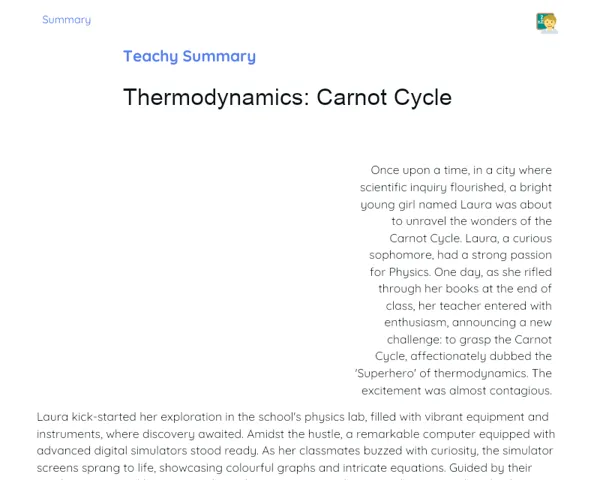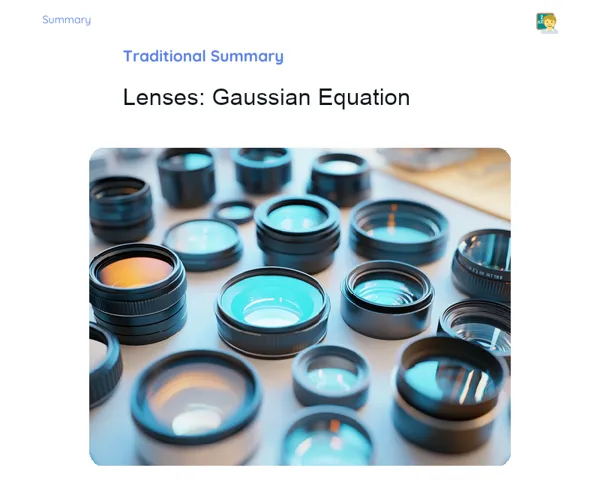Goals
1. Grasp the concept of wave refraction.
2. Calculate the angle of refraction using Snell's Law.
3. Understand the practical implications of refraction in various scenarios.
Contextualization
Wave refraction is a phenomenon we encounter in our everyday lives, whether it's noticing how a spoon looks broken in a glass of water or the sophisticated technology of optical fibers that powers our high-speed internet. Knowing about refraction is vital for the creation of numerous technologies that we rely on daily, like spectacles, cameras, and telescopes. For instance, spectacles are crafted based on the principles of refraction to aid those with vision impairments by redirecting light properly to the retina.
Subject Relevance
To Remember!
Concept of Wave Refraction
Wave refraction occurs when a wave changes direction while moving from one medium to another that has a different density. This change happens due to the variation in wave speed as it crosses the boundary between the two media.
-
Waves change direction when they transition between different media.
-
The speed of the wave alters as it moves across the boundary.
-
Commonly observed in daily activities, such as when we look at submerged objects in water.
Snell's Law
Snell's Law explains the relationship between the angles of incidence and refraction relative to the refractive indices of the involved media. It is represented by the equation n1 * sin(θi) = n2 * sin(θr), where n denotes the refractive index and θ represents the corresponding angles.
-
There is a mathematical relation between angles and refractive indices.
-
Used to calculate the angle of refraction when the angle of incidence and refractive indices of the media are provided.
-
Essential for designing lenses and optical systems.
Calculation of the Angle of Refraction
Determining the angle of refraction involves utilizing Snell's Law to find the angle at which the wave bends upon entering a new medium. This calculation is crucial for practical applications, like manufacturing eyeglass lenses.
-
Application of Snell's Law to figure out the angle of refraction.
-
Vitally important for accuracy in optical instruments.
-
Relevant in various technologies, including optical fibers and lenses.
Practical Applications
-
Eyeglass lenses: Use refraction to correct visual impairments by adjusting the light's path for precise focus on the retina.
-
Optical fibers: Apply the principles of refraction to transmit light across long distances with minimal signal loss, essential for high-speed data connections.
-
Endoscopes: Medical instruments that leverage refraction to relay images from within the human body, facilitating less invasive diagnostic and treatment procedures.
Key Terms
-
Refraction: Redirection of a wave when passing from one medium to another of differing density.
-
Snell's Law: The equation that connects angles of incidence and refraction along with the refractive indices of the present media.
-
Refractive Index: A measure reflecting how the speed of light is reduced within a material compared to a vacuum.
Questions for Reflections
-
How might comprehending refraction influence the innovation of new optical technologies?
-
What role does refraction play in correcting vision issues, and how does it enhance individuals' quality of life?
-
In what ways is refraction applied in telecommunications, and how does it contribute to the efficiency of data transfer?
Creating a Simple Refractometer at Home
In this mini-challenge, you'll build a simple refractometer to measure the refractive index of various liquids, applying the concepts of refraction and Snell's Law that you've learned.
Instructions
-
Form a group of 3 to 4 classmates.
-
Gather materials: laser pointer, clear plastic box, water, oil, alcohol, and a ruler.
-
Fill the plastic box with one of the provided liquids (water, oil, or alcohol).
-
Position the laser pointer so that the beam hits the surface of the liquid at a specific angle.
-
Measure the angle of incidence (θi) and the angle of refraction (θr) using the ruler and jot down the values.
-
Utilize Snell's Law (n1 * sin(θi) = n2 * sin(θr)) to compute the refractive index of the liquid (n2).
-
Repeat this process for the other liquids and compare your findings.
-
Discuss with your group the differences in refractive indices and why they might occur.



